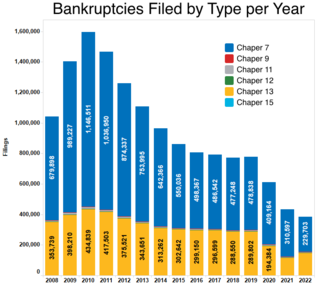| Morphitis v Bernasconi | |
|---|---|
 | |
| Court | Court of Appeal |
| Citation(s) | [2003] EWCA Civ 289, [2003] 2 WLR 1521 |
| Keywords | |
| Fraudulent trading | |
Morphitis v Bernasconi [2003] EWCA Civ 289 is a UK insolvency law and company law case, concerning fraudulent trading.
| Morphitis v Bernasconi | |
|---|---|
 | |
| Court | Court of Appeal |
| Citation(s) | [2003] EWCA Civ 289, [2003] 2 WLR 1521 |
| Keywords | |
| Fraudulent trading | |
Morphitis v Bernasconi [2003] EWCA Civ 289 is a UK insolvency law and company law case, concerning fraudulent trading.
TMC Transport (UK) Ltd’s former directors were Mr Bernasconi and Mr Monti. Mr Morphitis was the liquidator. They hired a group of solicitors who advised that the Insolvency Act 1986 rules on trading while insolvent could be circumvented by setting up a new company, resigning, and transferring the assets but not the liabilities there. The case turned on whether knowingly failing to pay a final instalment to their landlord was enough to constitute fraudulent trading under the Insolvency Act 1986, section 213.
Chadwick LJ held that there was not enough to constitute fraud in this case on this single instance. Not every fraudulent transaction makes the business a business carried on with intent to defraud. Moreover, there must be a causal connection between the fraud and the loss, or ‘some nexus between (i) the loss which has been caused to the company’s creditors generally by the carrying on of the business in the manner which gives rise to the exercise of the power and (ii) the contribution which those knowingly party to the carrying on of the business in that manner should be ordered to make to the assets in which the company’s creditors will share in the liquidation.’ Then, obiter he said it could not have been the intention of Parliament to allow more than compensatory claims under section 213. Disapproving the order of the judge below, he said that the provision for criminal charges in Companies Act 1985, section 458 (now Companies Act 2006, s 993) precluded any necessity for a punitive element.
Bankruptcy is a legal process through which people or other entities who cannot repay debts to creditors may seek relief from some or all of their debts. In most jurisdictions, bankruptcy is imposed by a court order, often initiated by the debtor.

Liquidation is the process in accounting by which a company is brought to an end. The assets and property of the business are redistributed. When a firm has been liquidated, it is sometimes referred to as wound-up or dissolved, although dissolution technically refers to the last stage of liquidation. The process of liquidation also arises when customs, an authority or agency in a country responsible for collecting and safeguarding customs duties, determines the final computation or ascertainment of the duties or drawback accruing on an entry.

In the United States, bankruptcy is largely governed by federal law, commonly referred to as the "Bankruptcy Code" ("Code"). The United States Constitution authorizes Congress to enact "uniform Laws on the subject of Bankruptcies throughout the United States". Congress has exercised this authority several times since 1801, including through adoption of the Bankruptcy Reform Act of 1978, as amended, codified in Title 11 of the United States Code and the Bankruptcy Abuse Prevention and Consumer Protection Act of 2005 (BAPCPA).

In accounting, insolvency is the state of being unable to pay the debts, by a person or company (debtor), at maturity; those in a state of insolvency are said to be insolvent. There are two forms: cash-flow insolvency and balance-sheet insolvency.
A fraudulent conveyance or fraudulent transfer is the transfer of property to another party to prevent, hinder, or delay the collection of a debt owed by or incumbent on the party making the transfer, sometimes by rendering the transferring party insolvent. It is generally treated as a civil cause of action that arises in debtor/creditor relations, typically brought by creditors or by bankruptcy trustees against insolvent debtors, but in some jurisdictions there is potential for criminal prosecution.

Salomon v A Salomon & Co Ltd[1896] UKHL 1, [1897] AC 22 is a landmark UK company law case. The effect of the House of Lords' unanimous ruling was to uphold firmly the doctrine of corporate personality, as set out in the Companies Act 1862, so that creditors of an insolvent company could not sue the company's shareholders for payment of outstanding debts.
Wrongful trading is a type of civil wrong found in UK insolvency law, under Section 214 Insolvency Act 1986. It was introduced to enable contributions to be obtained for the benefit of creditors from those responsible for mismanagement of the insolvent company. Under Australian insolvency law the equivalent concept is called "insolvent trading".
In company law, fraudulent trading is doing business with intent to defraud creditors.
In law, a liquidator is the officer appointed when a company goes into winding-up or liquidation who has responsibility for collecting in all of the assets under such circumstances of the company and settling all claims against the company before putting the company into dissolution. Liquidator is a person officially appointed to 'liquidate' a company or firm. Their duty is to ascertain and settle the liabilities of a company or a firm. If there are any surplus, then those are distributed to the contributories.

United Kingdom insolvency law regulates companies in the United Kingdom which are unable to repay their debts. While UK bankruptcy law concerns the rules for natural persons, the term insolvency is generally used for companies formed under the Companies Act 2006. Insolvency means being unable to pay debts. Since the Cork Report of 1982, the modern policy of UK insolvency law has been to attempt to rescue a company that is in difficulty, to minimise losses and fairly distribute the burdens between the community, employees, creditors and other stakeholders that result from enterprise failure. If a company cannot be saved it is liquidated, meaning that the assets are sold off to repay creditors according to their priority. The main sources of law include the Insolvency Act 1986, the Insolvency Rules 1986, the Company Directors Disqualification Act 1986, the Employment Rights Act 1996 Part XII, the EU Insolvency Regulation, and case law. Numerous other Acts, statutory instruments and cases relating to labour, banking, property and conflicts of laws also shape the subject.

R v Grantham [1984] QB 675 is a UK insolvency law case which decides that an intent to defraud, now under the Insolvency Act 1986 section 213, needs to be established for a conviction for fraudulent trading, and knowing that there was no prospect of being able to pay debt when they fell due, even if there might be a distant prospect in the future, constituted an intent to defraud.

Re Augustus Barnett & Son Ltd [1986] BCLC 170 is a UK insolvency law case on the standard of fault required to show that directors have been guilty of fraudulent trading.
Re a Company [1990] BCC 526 is a UK insolvency law case, on the offence of fraudulent trading under s.213 of the Insolvency Act 1986.

Re Produce Marketing Consortium Ltd [1989] 5 BCC 569 was the first UK company law or UK insolvency law case under the wrongful trading provision of s 214 Insolvency Act 1986.

Re MC Bacon Ltd [1990] BCLC 324 is a leading UK insolvency law case, concerning transactions at an undervalue and voidable preferences.

Re Parkes Garage (Swadlincote) Ltd [1929] 1 Ch 139 is a leading UK insolvency law case, concerning a voidable floating charge for past value.
Arbuthnot Leasing International Ltd v Havelet Leasing Ltd [1990] BCC 636 is a leading UK insolvency law case, concerning a fraudulent transaction under the Insolvency Act 1986 section 423.

Re Gray's Inn Construction Co Ltd [1980] 1 WLR 711 is a leading UK insolvency law case, concerning the cessation of transactions without court approval after a winding up petition.

Oldham v Kyrris[2003] EWCA Civ 1506 is a UK insolvency law case concerning the administration procedure when a company is unable to repay its debts.

Jetivia SA v Bilta (UK) Limited [2015] UKSC 23 is a UK company and insolvency law decision of the Supreme Court of the United Kingdom in relation to (i) the attribution of unlawful acts of a director to the company where the company is the victim of the unlawful act, and (ii) the extent to which liability for fraudulent trading under section 213 of the Insolvency Act 1986 has extraterritorial effect.